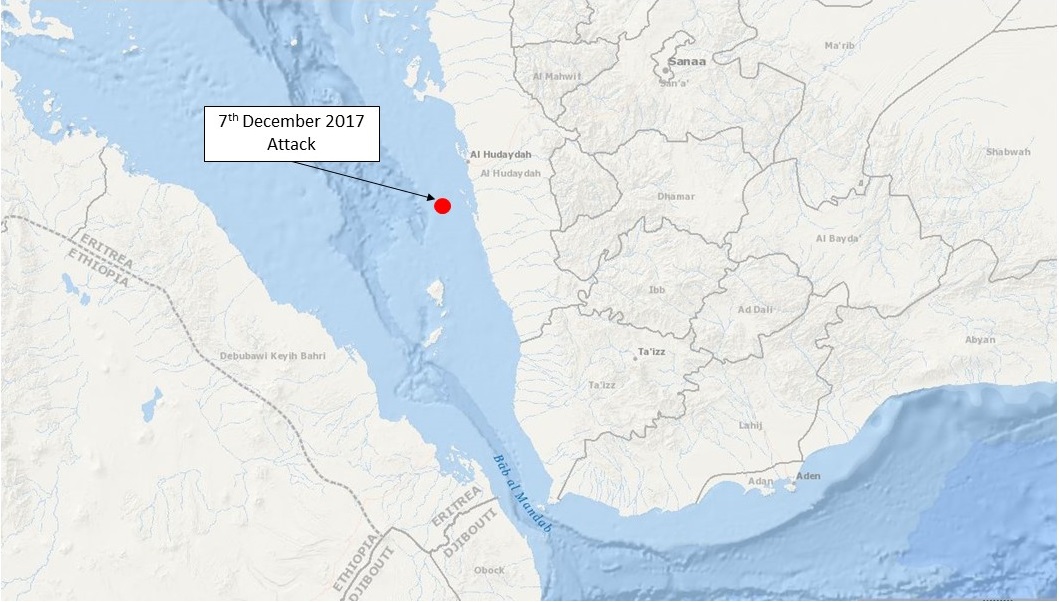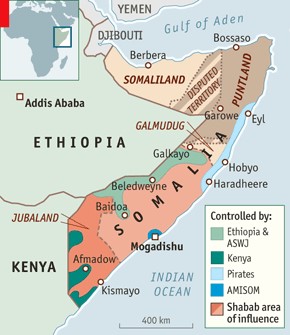Indian Ocean HRA Overview
Continued reported incidents reflect that the HRA remains a threat in regards to piracy activity in the region. Recent efforts to improve the security environment will reduce the impact of Somali piracy. However, factors onshore in Somalia continue to influence piracy in the region such as the ongoing famine and instability. Piracy groups in Somalia still bear the motivation to try and carry out attacks and still with some capability to target merchant vessels. Increasingly, vessels in the High Risk Area are subjected to incidents that appear to be co-ordinated small boat piracy approaches however they choose not to ultimately attack. These incidents are then difficult to classify as attempted piracy or regional patterns of life. However, in recent weeks there have been numerous attacks and attempted boarding’s ranging from incidents in the Somali basin, Gulf of Oman and Gulf of Aden The increased presence of naval patrols and armed security on board vessels act as a deterrent to the threat of piracy, however those vessels transiting in the area without the presence of armed security remain a significant risk.
Reported Incidents HRA
One incident to report (UKMTO)
Incident details
On the 7th December 2017 at 1830 UTC a Vessel reported being attacked by 2 armed skiffs in posn 14-32.5N 042-47.3E (20nms South West of Hodeidah). Incident is now complete. Vessel and crew are safe.
Intelligence comment
The incident happened in close proximity to Hudaydah which is, at present, under rebel control. This incident is likely to be linked to the conflict in Yemen rather than attempted piracy.
Reports on the 7th December stated that Yemeni government forces had entered the Al Hudaydah Governorate on the Red Sea for the first time since the war began. Yemeni government forces have reported to have taken full control of the coastal city of al-Khawkhah in the Al Hudaydah Governorate, 75 miles south of Hudaydah. Further reports highlighted that Houthi rebels have been heavily deployed in Hudaydah, anticipating a potential new ground offensive by coalition-backed forces on the Red Sea port city. It can be said therefore, with the potential escalation of violence on the Red Sea coastline, there is an increased risk of violence spilling out into the maritime domain, with the main protagonists being that of the Houthi rebels.
Yemen Update
Former President Saleh is dead, what is next for Yemen?
Key Points
- Yemen’s former President Ali Abdullah Saleh has been killed by Houthi’s at a Houthi checkpoint after trying to flee the rebel forces in Sanaa on the 4th December 2017. This happened after three days of intense fighting between the fractured Houthi-Saleh alliances.
- In days previous to his death, Saleh had shown signs of an alliance with the Saudi-led coalition, turning his back on the Houthis. He appears to have paid for this with his life, similar to what happened to Libya’s Gaddafi in 2011.
- Saleh’s death only adds to the volatility to a war that has no end in sight and a humanitarian crisis often described as the worst in the world.
Assessment
Even more doubt has been cast on the prospect of peace in Yemen, some commentators have stated that Saleh may have been the only figure likely to help bring to an end Yemen’s civil war. His death will now only deepen divisions in all parties to the Yemeni conflict. Saleh’s son reportedly vows vengeance on the Houthi rebels and Houthi leader warns military escalation is probable. However, the fro
ntlines in the conflict have changed very little since the end of 2016, and it is likely the stalemate will continue on. Tensions are expected to rise in Yemen creating further instability and violence in the proxy war, with influence from Iran and Saudi Arabia the conflict may escalate even further.
Al Qaeda continues to hold a significant presence in Yemen, controlling land in the south, close to the Gulf of Aden and in central western areas. The group have capitalised on the chaos in the country in order to gain a foothold. It is assessed that the death of former President Saleh may contribute to strengthening Al Qaeda’s presence in Yemen.
Threat of violence/terrorism at sea off the coast of Yemen
Yemen’s civil war has created an environment mirroring Somalia’s lawlessness. The ongoing conflict in Yemen demonstrates how poor security on land has led to violence spilling out into the maritime domain. Houthi rebels continue to control a large amount of Yemen’s red sea coastline and continue to attack coalition warships with methods such as missiles and explosives.
The threat of terrorism at sea off the coast of Yemen remains by rebel groups and terrorist organisations such as AQAP. Such is highlighted by attacks against the LNG Tanker Galacia Spirit in October 2016 and the MT Muskie a product tanker in May 2017. Both involved the use of explosive laden skiffs, as an attempt to cause major devastation in the critical international shipping passage of the Bab-el-Mandeb. It must not be ruled out that similar attacks may be attempted in the future. In the past couple months, there have been reports of explosive laden boat attacks targeting coalition vessels in Mokha port. On the 12th and 16th of August, Houthi rebels attempted targeting coalition vessels at Mokha port with explosive-laden boats. With both incidents, Saudi backed Yemeni forces destroyed the boats before it reached the port area. Mokha port continues to be a target for maritime violence as it was suggested to be used as the main port instead of the port of Hudaydah which is currently under Houthi rebel control.
Further to this, Houthi rebels have been reported to have deployed sea mines in the entrance to ports such as Mokha, if the mines are not removed by the coalition there is a danger of them breaking free and drifting into shipping lanes. It remains a persistent threat that merchant vessels may be the subject of a miscalculated attack or as has been suggested recently, possibly threats of a calculated attack.
Somalia Update
Al Shabaab car bomb targets SNA general in Mogadishu
Al Shabaab militants detonated a car bomb targeting the Somali National Army (SNA) General Abdiweli outside Villa Baidoa in Mogadishu on the 4th December. The vehicle exploded after the general left his car. Villa Baidoa is the SNA headquarters located nearby to the site of the Mogadishu bombing on the 14th October which killed over 500 civilians.
SNA arrests al Shabaab militants in Lower Shabelle region, southern Somalia
SNA forces detained several al Shabaab militants during a raid in Afgoi, Lower Shabelle region, southern Somalia on the 5th December. SNA conducted the raid after a suspected Shabaab militants shot a prominent town elder. Al Shabaab has conducted three attacks in Afgoi since the end of November this year.
Al Shabaab militants attempt to raid military base in Lower Juba region, southern Somalia
Shabaab militants attempted to raid a military base in lower Jubba, southern Somalia on the 5th December. Al Shabaab has attacked Kenyan and Somali forces stationed in Dhobley three times since the end of November this year. Dhobley is located less than 20 miles from the Kenyan-Somali border and serves as a connection point for Somali refugees fleeing to Kenya.
Al Shabaab
Al Shabaab has been increasingly active in Somalia in recent months. The militant group has been battling the Somali Federal Government (SFG) in an effort to govern Somalia. Since 2013, al Shabaab pledged allegiance to al-Qaeda attracting the United States to execute raids and airstrikes against the group. However increased US airstrikes have not enabled African Union Mission (AMISOM) and Somali security forces to gain any momentum against the terrorist group, al Shabaab has not suffered any great loss of territory or significant casualties from the airstrikes. Al Shabaab continues to maintain strongholds in southern and central Somalia and continue to carry out attacks including suicide bombings, attacks on hotels and restaurants as well as military bases for African Union troops and the SNA. Al Shabaab’s aim is to destabilize Mogadishu and weaken the SFG as demonstrated in the October 14th attack which killed over 500 people. These attacks are aimed to undermine the SFG’s legitimacy. Further to this, there attacks are further exemplifying the issue of famine, terrorism and corruption making the prospect of stability in Somalia in the near future, bleak. Al Shabaab is likely to maintain its present operational tempo and further expand its territory in central and southern Somalia.
Piracy Activity
2017 saw the worst drought Somalia has seen in 40 years, this coupled with the struggling government and extreme militant violence has brought 6.7 million people into crisis. Pirate financiers capitalise on the chaos offering opportunities to local people but also diversifying in other criminal activities such as human smuggling. Pirate groups have seen to be active in recent weeks in various different locations such as the Somali basin, Gulf of Aden and Gulf of Oman. It is needless to say, as the increased instability in Somalia continues, it will serve as a permissive environment for piracy operations with an ongoing threat to shipping in the region.



